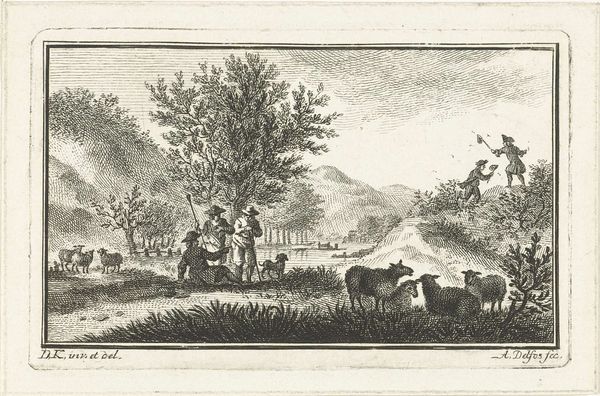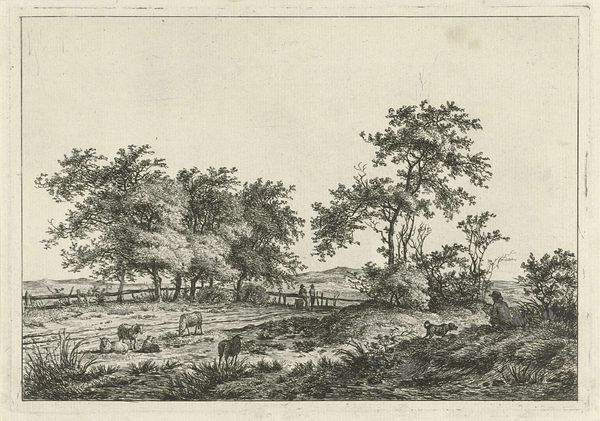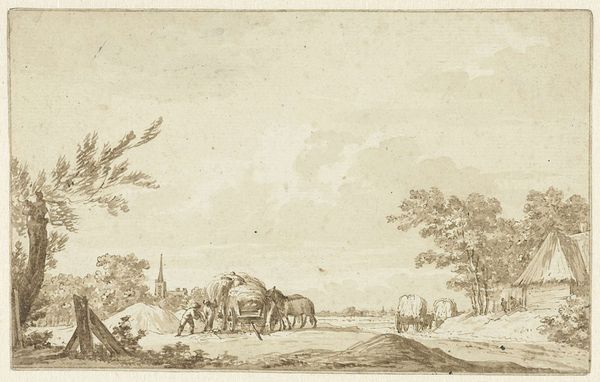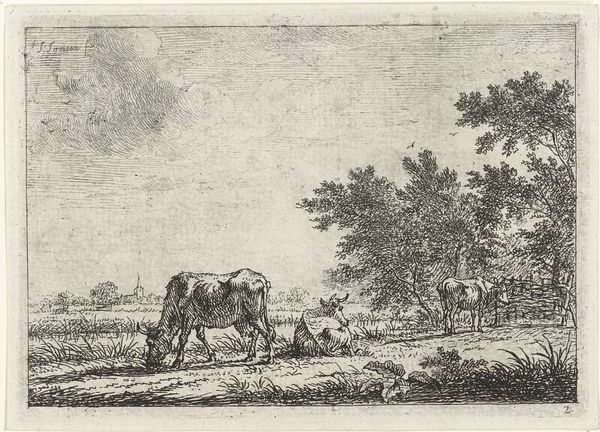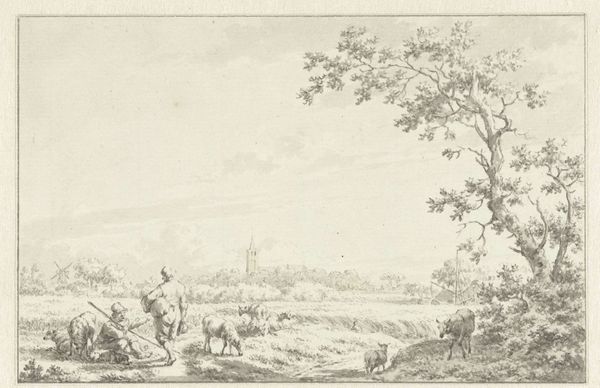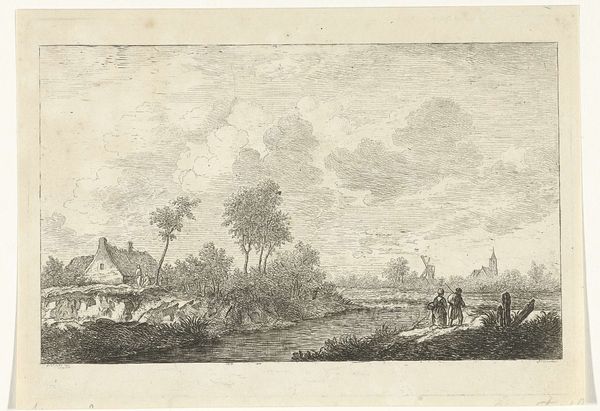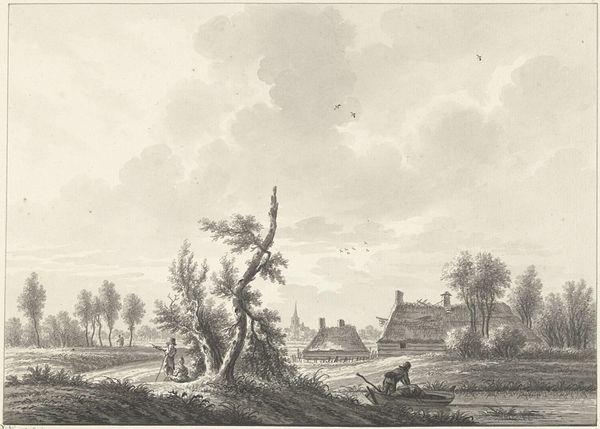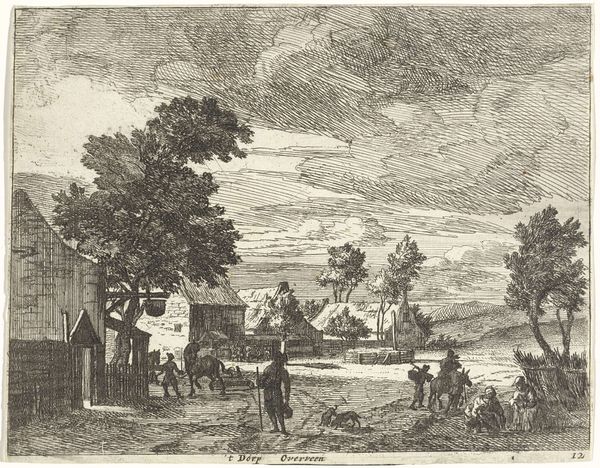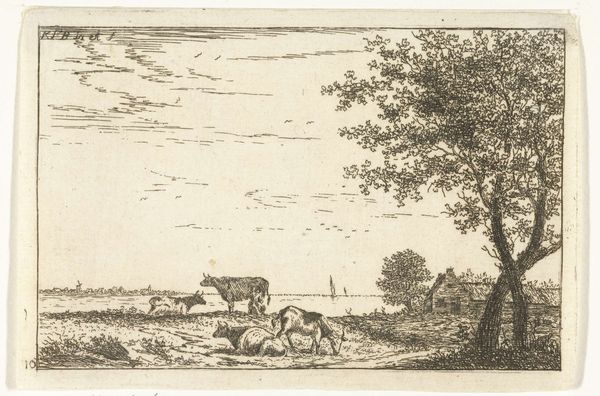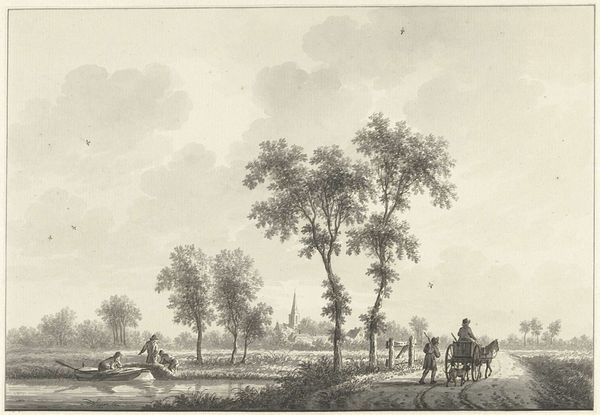
drawing, print, etching, ink, engraving
#
drawing
#
pen drawing
# print
#
etching
#
landscape
#
figuration
#
ink
#
genre-painting
#
engraving
#
realism
Dimensions: height 59 mm, width 95 mm
Copyright: Rijks Museum: Open Domain
Curator: Abraham Delfos, active in the mid-18th century, created this scene called "River Landscape with Walkers and Draftsman near a Village." It's an etching, engraving, and pen drawing in ink on paper, currently held in the Rijksmuseum collection. Editor: The mood is instantly calming, almost nostalgic. It depicts a tranquil Dutch landscape, but there is also something melancholic about the isolation of figures, perhaps indicative of emerging class and shifting communal identities during that era. Curator: It does seem intentionally composed to convey tranquility. The artist contrasts the pastoral with hints of urbanization—a distant village with its church steeple, but also figures like the artist sketching, indicating a shift in how people engaged with and consumed the landscape. Consider the iconography of cows here, common symbol in the Dutch Golden Age and beyond representing prosperity, gentleness, but here they seem more part of the scenery than symbols of wealth. Editor: Right, and these walking figures – they're not farmers, they're spectators, their detached presence hinting at changing relationships to land, perhaps indicative of burgeoning mercantile interests, and emergent commodification of landscape. They seem positioned to reinforce colonial power and authority. The contrast with the working class or agricultural workers is palpable, subtly embedded within what may appear to some as merely ‘pastoral’. Curator: Perhaps, or perhaps a sign of nascent Enlightenment ideals too. Depictions of everyday life— genre paintings— became quite popular then. The very act of depicting ordinary folk in a setting like this could be interpreted as an attempt to legitimize the value of the common citizen within a cultural discourse still dominated by aristocracy and religious figures. Editor: That’s definitely a factor. However, it still serves to uphold hierarchical relationships, by presenting these images in such a contained format. In an effort to romanticize a countryside in service to commerce. One might challenge what this kind of selective representation serves to erase about colonial reality in favor of nostalgia. Curator: These kinds of art are very complex when considering cultural representation and preservation. When viewed through this lens, the drawing resonates with layers of meaning beyond just its pleasant subject. Editor: Yes, what begins as a relaxing pastoral vista unveils the underlying societal refractions of its time.
Comments
No comments
Be the first to comment and join the conversation on the ultimate creative platform.
